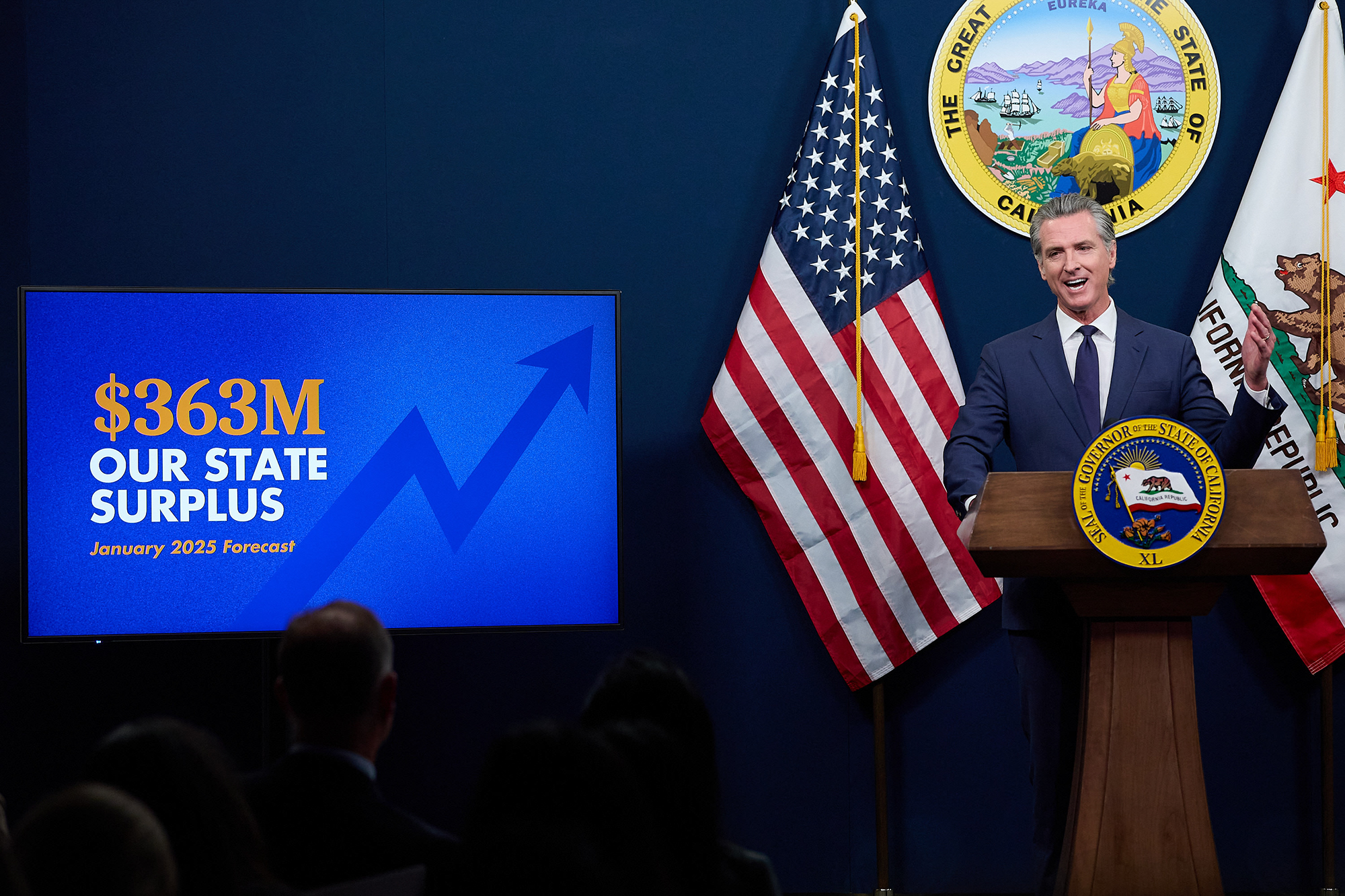California’s chronic deficit looms again as Newsom prepares his last state budget

It seems like just yesterday that Governor Gavin Newsom and state legislators enacted a state budget that papered over a $20 billion gap between income and outgo while blaming President Donald Trump for their fiscal dilemma. In fact, it was less than four months ago that Newsom signed the $321 billion 2025-26 budget, saying:
“As we confront Donald Trump’s economic sabotage, this budget agreement proves California won’t just hold the line — we’ll go even further. It’s balanced, it maintains substantial reserves, and it’s focused on supporting Californians: slashing red tape and catapulting housing and infrastructure development, preserving essential healthcare services, funding universal pre-K, and cutting taxes for veterans.”
However, Trump had nothing to do with what state officials later described as a “structural deficit,” meaning that spending encased in current law outstrips revenue expectations. Rather, the deficit stems from what officialdom later acknowledged as a $165 billion error in revenue projections made in 2022, which had fueled Newsom’s boast of having a $97.5 billion surplus.
That surplus, it turns out, was a phantom. Its exposure resulted in a sharp increase in spending and left the state stuck with a chronic income/outgo gap that persists today. To cover this gap in the current year, Newsom and legislators have tapped emergency reserves, borrowed money from the state treasury’s special funds, postponed some spending, and engaged in some accounting gimmickry.
On Thursday, the Legislative Analyst’s Office pegged the budget’s total borrowing—both on and off the books—at $21 billion.
Although this budget is less than four months old, the annual budgetary cycle will soon begin anew. The Legislature’s budget analyst, Gabe Petek, will issue his annual overview of the state’s finances in a few weeks. This will be followed in December by the Department of Finance’s finalization of parameters—decisions on how to allocate funds based on revenue assumptions—and in January by the introduction of the first draft of the 2026-27 budget plan.
This will be Newsom’s final budget before his second and final term as governor ends 14 months from now. He is also very likely to embark on a campaign for the White House during that time. All indications point to another year of coping with a multibillion-dollar deficit.
Major revenues have been running a few billion dollars ahead of estimates in the current budget, but not nearly enough to markedly shrink the structural deficit. “Despite the recent revenue strength, California’s budget condition remains fragile,” says Jason Sisney, the state Assembly’s top budget advisor, in a memo this week.
Sisney also notes, “There are many indications that an investment bubble from the so-called ‘artificial intelligence’ industry is fueling recent tax revenue gains.” He correctly added, “Bubbles can lead to dramatic state tax revenue declines when they burst.”
This scenario echoes what happened about a quarter-century ago when the dot-com bubble burst, creating a large state budget deficit.
Having finessed the state’s chronic deficit over the last three years, Newsom and legislators have now run up billions of dollars in debt by tapping special funds. They must also account for spending deferrals and other budget maneuvers as they write his final budget.
Additionally, they must contend with the effects of relying heavily on emergency funds, including $7.1 billion in the current budget, to cover shortfalls.
“Most of the state’s rainy day fund has been used to balance the last two budgets, and the state’s large cash balances largely are unavailable to help fix a structural deficit in the General Fund,” Sisney observes.
As California approaches the next budget season, the challenge remains clear: closing the gap between spending and revenue without relying on precarious financial patches or risking sudden fiscal instability.
https://calmatters.org/commentary/2025/10/california-chronic-deficit-budget/




![Wisconsin Mom Seething After Dems Give Daughter ‘Is He Dead Yet?’ Anti-Trump Bracelet [WATCH]](https://ventfil.com/wp-content/uploads/2025/10/2025.09.04-12.53-lifezette-68b98bc656241-150x150.jpg)

